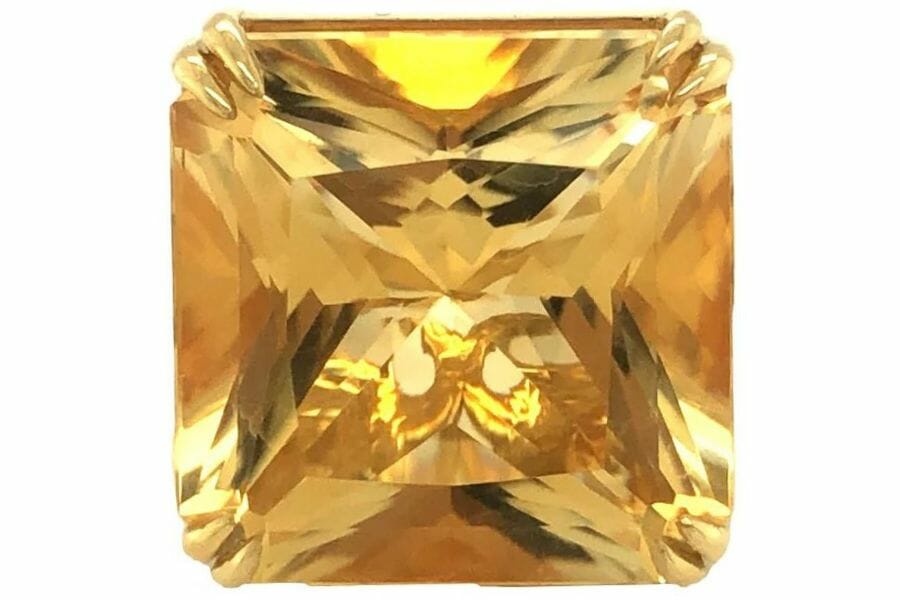Have you ever seen a gemstone that shines like the sun? If so, you’ve probably come across citrine. Citinre colors can come in a lot of different shades from light lemon to deep amber and some other more interesting hues.
You may even see some that have a hint of orange or green!
It’s not just about the color, though. The whole story of how these stones get their color is super interesting and involves a mix of nature and science.
We’re going to take a closer look at citrine and the different colors you might see in this gemstone, and we’ll explain what makes each shade unique. We’ll chat about five main colors and by the end, you’ll know all about what makes citrine so colorful and why some colors might be more valuable than others.
So get ready! We’re about to go on an exciting adventure into the world of citrine, a gemstone as bright and exciting as the sun itself!
The Most Common Citrine Color
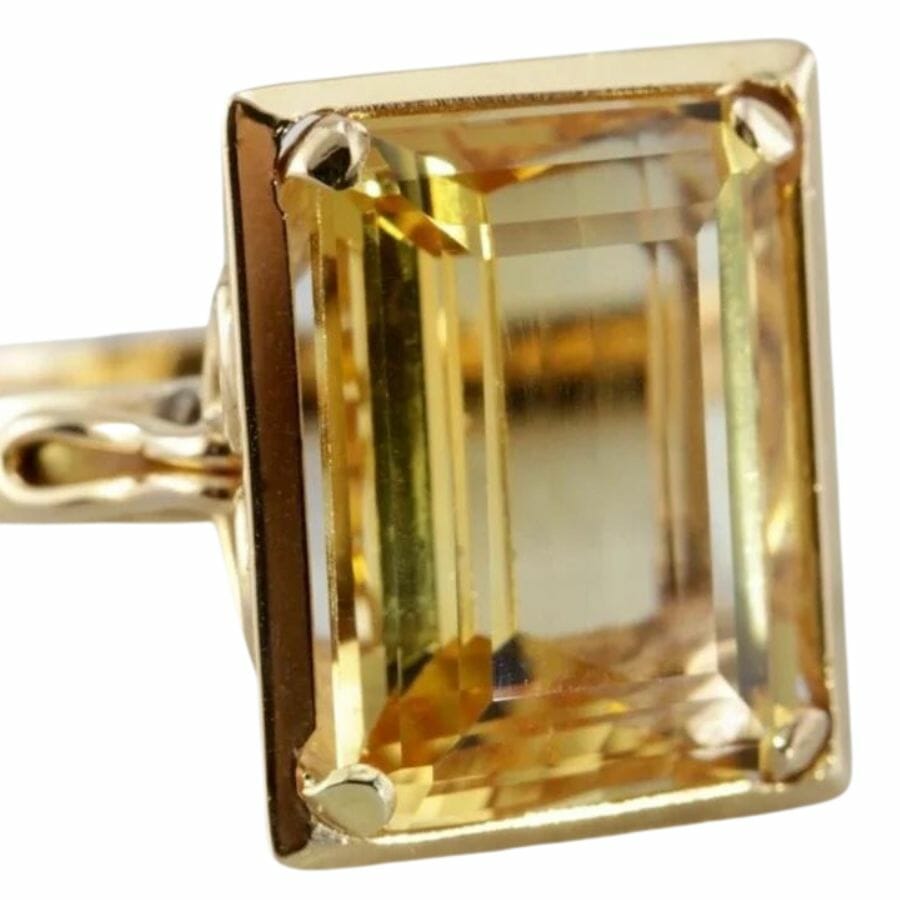
Citrine is most commonly found in shades of golden yellow. This golden color can range from a light, sunny yellow to a deep, honey-like amber.
These are often some of the most valuable as well. You can check out our guide to figuring out how much a citrine is worth to learn more.
But have you ever wondered how this gemstone gets its stunning color? Well, let’s take a closer look.
The color of citrine is actually due to tiny amounts of iron impurities found within the quartz crystal structure. When this iron gets heated—either naturally deep within the Earth or artificially in a lab—it causes a change in the arrangement of the electrons in the crystal.
This change allows the citrine to absorb blue and violet light, while reflecting yellow light, which our eyes perceive as a golden hue creating the color citrine is most often associated with.
Natural heating deep in the Earth can take many, many years. Over time, as the Earth’s crust moves and changes, quartz crystals can be subjected to extremely high temperatures.
This slow, steady heating process can turn clear quartz into the golden yellow citrine we all know and love. However, natural citrine is quite rare.
Most of the citrine you’ll find in jewelry stores today is actually made by carefully heating amethyst, another form of quartz that’s more common and usually purple, in a special oven. Even though they are treated, they are still some of the most beautiful yellow gemstones you will find.
This heat treatment mimics the natural heating process, but it takes a lot less time. This is why citrine is often more affordable than some other gemstones.
The Different Colors Of Citrine
Now that we’ve covered the most common, we wanted to explore some of the lesser know colors that you can find. Some of these are even more beautiful than the original!
As you will see, most of these colors appear in nature but it’s more common to see them artificially created. You can learn how to tell the difference between real and fake citrine here.
Pale Yellow Citrine (Lemon Quartz)
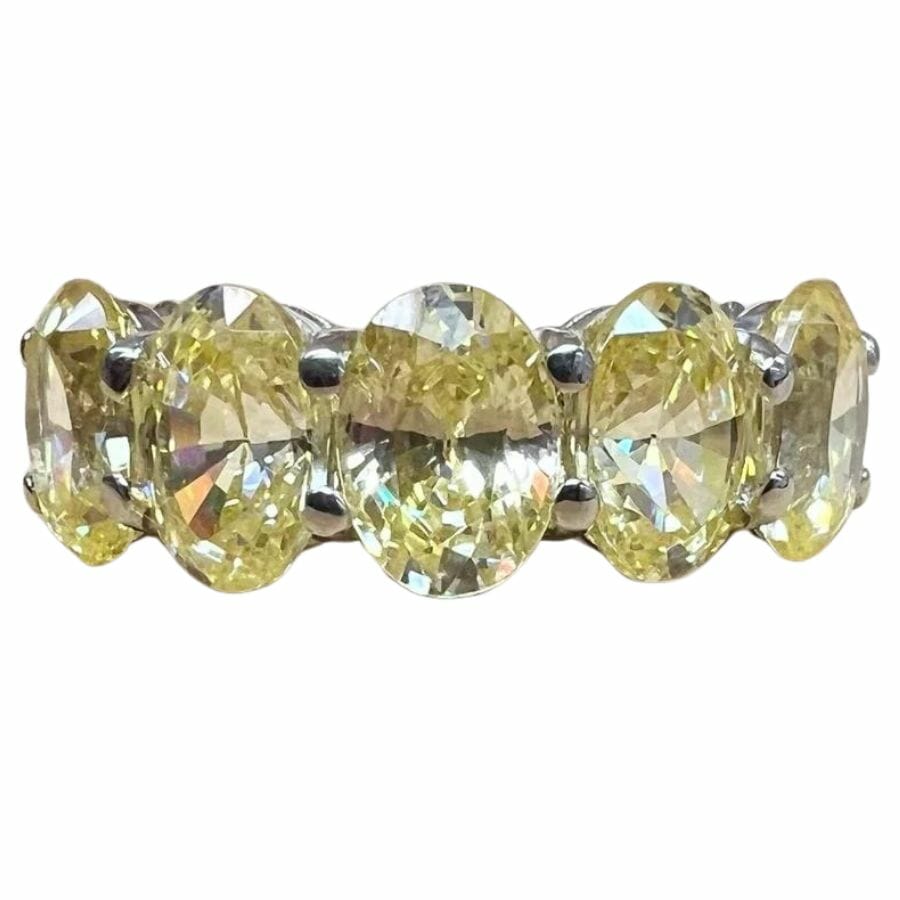
Pale yellow citrine, often referred to as “lemon quartz,” is a beautiful gemstone that carries the sunny color of a spring morning. Like other forms of citrine, this lemony variety belongs to the quartz family of minerals, which means it’s hard, durable, and perfect for all kinds of jewelry.
The pale yellow color of this citrine is due to iron impurities within the quartz crystals. In nature, when these iron impurities are heated at high temperatures, it changes the way the quartz absorbs light. The end result is a gemstone that reflects a light, pleasant yellow color.
However, finding natural pale yellow citrine is a rare occurrence. Most citrine on the market today, including the pale yellow variety, is made by heating either amethyst or smoky quartz in a lab.
By controlling the amount of heat applied, gemologists can create a variety of citrine colors, including the delicate pale yellow. It’s a fascinating process that combines the beauty of nature with the precision of science!
Where you can find pale yellow citrine
Natural pale yellow citrine is quite rare. When it does occur, it’s usually found in areas where there’s a lot of quartz and heat, such as volcanic regions and in certain types of granite.
The largest producer of natural citrine is Brazil. Brazilian citrine is often found in the states of Minas Gerais, Rio Grande do Sul, and Bahia.
Other sources of natural citrine include the African countries of Madagascar and Tanzania, the Ural Mountains in Russia, and the Spanish island of La Palma in the Canary Islands.
If you’re interested in finding citrine yourself check out our guide to the best rockhounding locations.
Golden Citrine
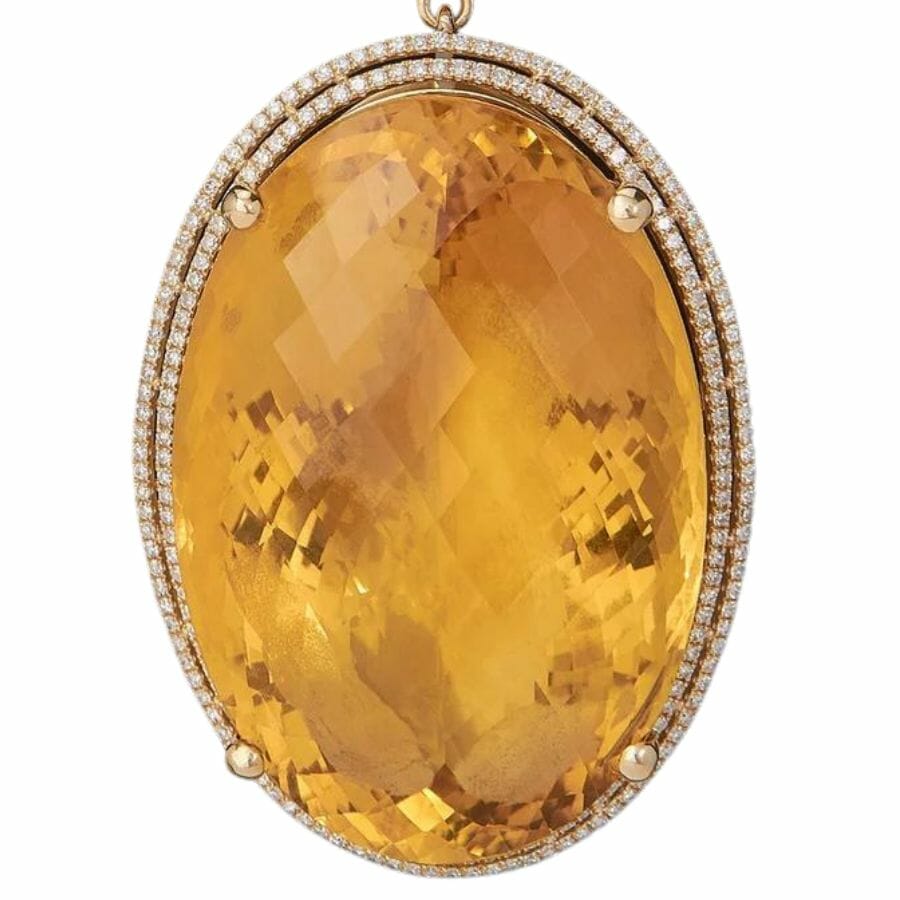
Golden citrine is a stunning variety of quartz that stands out for its rich, honey-like color. This color resembles the glow of pure gold or the warmth of a setting sun.
Its color is also due to iron impurities found in the quartz crystals. These impurities, when heated up either naturally in the Earth or artificially in a lab, change how the quartz absorbs light. As a result, the gemstone reflects back a rich golden hue that we see as the color of the citrine.
However, it’s important to know that most golden citrine we see today isn’t naturally occurring. Instead, it’s often made by heating purple amethyst or smoky quartz in a laboratory setting. The careful application of heat causes the gem to change color, resulting in the lovely golden citrine we adore.
Despite being created in a lab, this process mimics the natural heating that happens deep within the Earth, making the result just as beautiful as a naturally occurring gemstone.
Where you can find golden citrine
Golden citrine tends to be found in the same places as pale yellow citrine.
Madeira Citrine
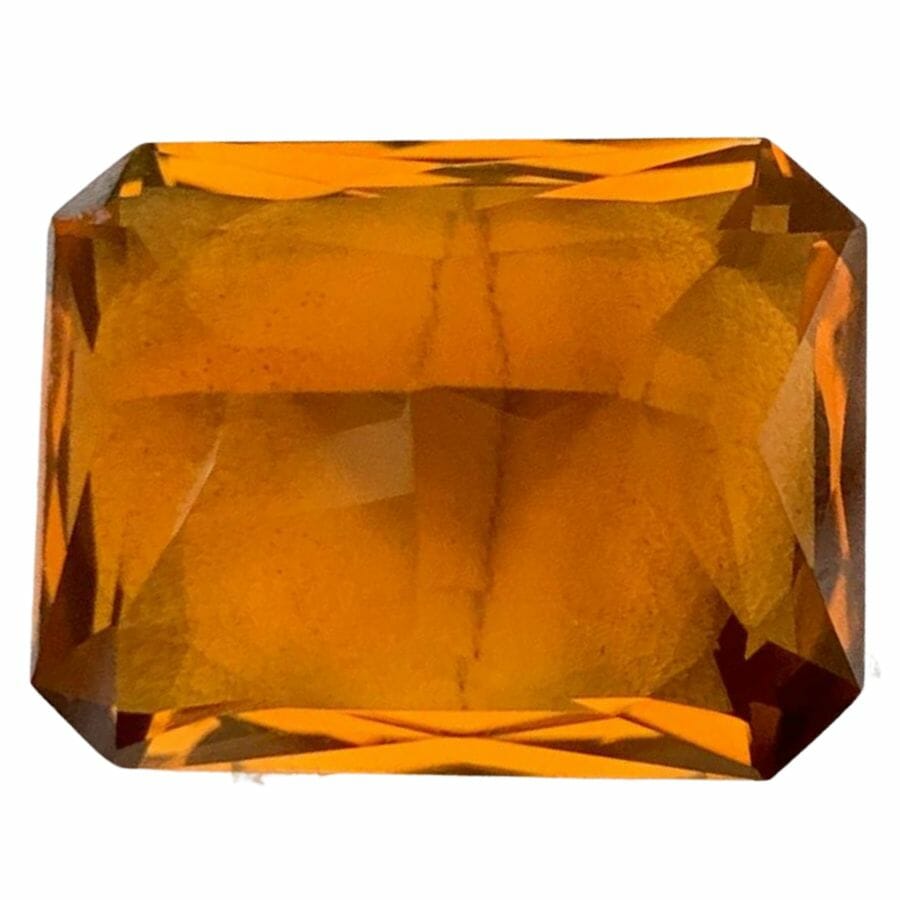
Madeira citrine is a special variety of citrine that shines with a deep, warm color, much like a fine Madeira wine. This gemstone gets its name from that similarity in color.
The deep, rich color of Madeira citrine comes from iron impurities in the quartz. These impurities, when heated at high temperatures either naturally in the Earth or artificially in a lab, change how the quartz absorbs and reflects light.
This results in the gorgeous, dark golden-brown color of Madeira citrine.
While Madeira citrine can form naturally, most of the Madeira citrine on the market is created by heating amethyst or smoky quartz.
By carefully controlling the temperature, gemologists can transform these more common forms of quartz into the beautiful and eye-catching Madeira citrine.
Where you can find madeira citrine
Finding Madeira citrine naturally in the wild is quite rare. This is due to the specific conditions required for its formation: not only must quartz be present, but it also needs to contain iron impurities and undergo prolonged exposure to heat.
Madeira citrine can be found in the same locations as pale yellow and golden citrine but tends to be a lot rarer. Like most of the best places for crystal hunting, you tend to get a wide variety of the same types in the same area.
Orange Citrine
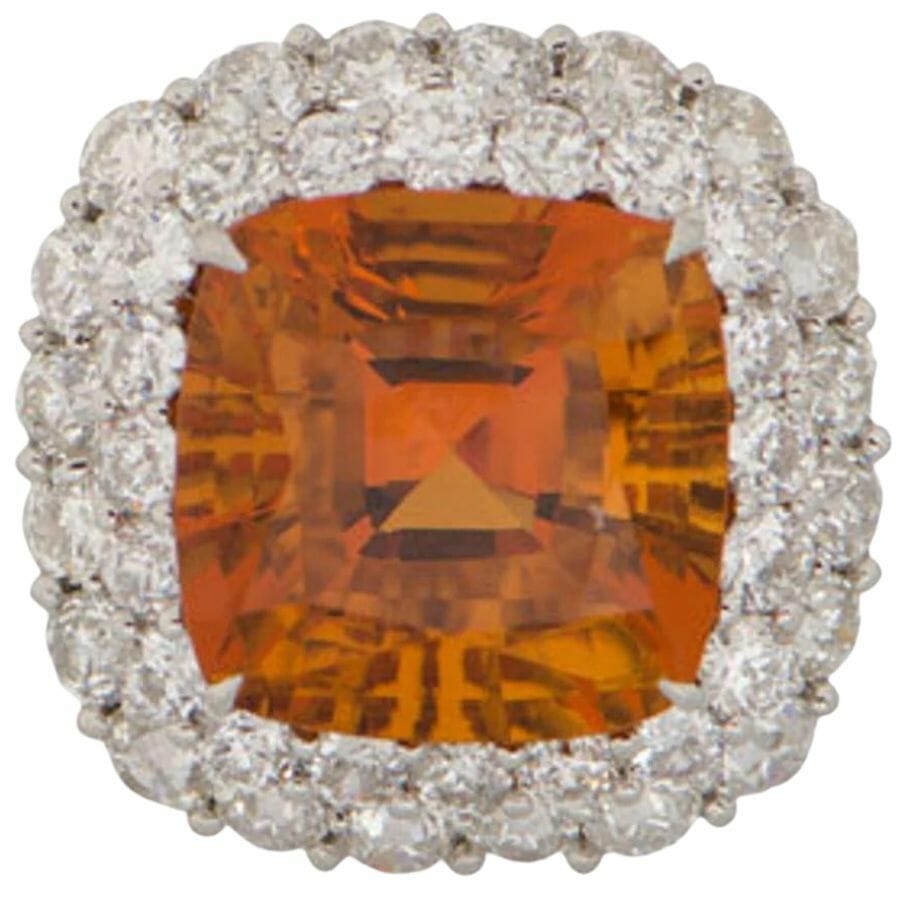
Orange citrine is a vibrant variety of quartz that looks like a sunset captured in a gemstone. It’s durable and strong, which makes it perfect for all kinds of jewelry.
The bright orange color of this citrine comes from iron impurities in the quartz. Orange citrine has a higher concentration of iron impurities and has been subjected to more intense heat, either naturally or artificially.
This heightened heat and iron content cause the gem to absorb more blue and violet light, resulting in a reflected color that appears more orange to our eyes.
Most orange citrine isn’t found naturally. Instead, it’s often created by heating amethyst or smoky quartz in a lab.
Where you can find orange citrine
Orange citrine is found where most other colors are. It simply has a higher concentration of iron which makes it more distinct.
Greenish-Yellow Citrine
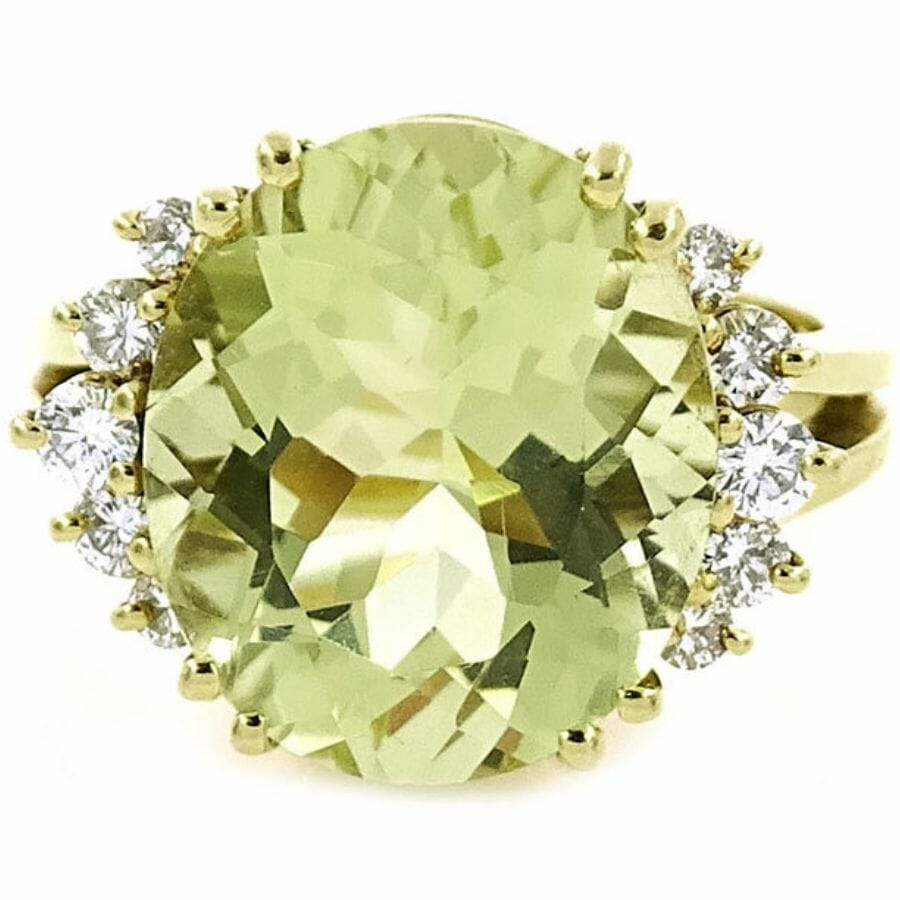
Greenish-yellow citrin is quite rare and can be attributed to a slightly different chemical composition and formation condition. These involve variations in the type and amount of impurities (including aluminum), heat exposure, and potentially even natural or artificial irradiation, which can influence a quartz crystal’s color.
While both yellow citrine and greenish-yellow citrine share many similar properties, the main difference between them is their color, influenced by the unique circumstances of their formation or treatment.
Where you can find greenish-yellow citrine
All colors of citrine tend to be found in the same areas. It’s just the differences in the trace impurities in the gems that change the hue to be more greenish.

